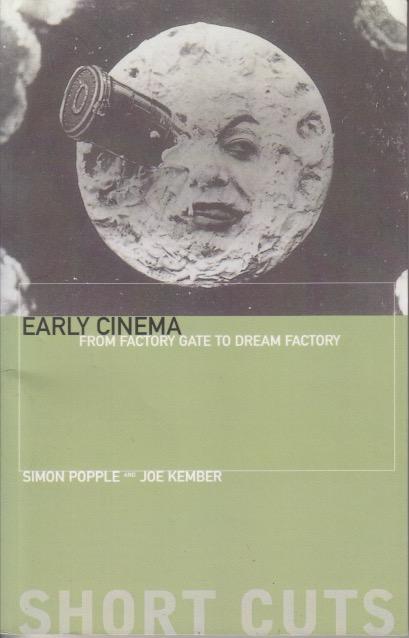
To an historian who cut his teeth on deep antiquity (if circumstances were different I would’ve ended up a Sumerologist), my current fascination with film feels manageable. The form of communication we call “movies” really only began around 1895. For those of us who find 1000 BCE a bit too modern, the nineteenth century seems strangely contemporary. Simon Popple and Joe Kember offer a service, therefore, by giving us a Short Cuts on Early Cinema. I’ve never formally studied cinematography, of course. I have watched movies my entire life—grew up with them—and have learned to write about them (with some degree of intelligence, I hope!). The history of the industry itself is fascinating. Short Cuts are written for students, and this one covers the first twenty years of cinema, 1895–1914. The cutoff coincides with the start of World War One, although not the introduction of sound, but it works nevertheless.
Although I learned a lot from this little book, the writing was sometimes verging on the technical. Also, and this is a personal pet peeve, many of the paragraphs were too long. This is an academic epidemic, not applying to this book only. Look, I know the whole topic sentence and development thing, but paragraphs may be divided in different places, hopefully compelling the reader on. When I see books intended for “general readers” with a wall of unbroken left margin, I shudder. Give the eye a break. This little digression shouldn’t be taken to imply that this book does it a lot, but there are some long paragraphs and they can make you lose your way. In any case, there’s lots of good info here to balance out the occasional academic framing.
I especially found useful the year-by-year breakdown of major development in the early film industry. Movies required quite a few breakthroughs, not the least of which was photography itself and also film stock that could be measured in hundreds of feet. The machines to both film movement and project film. Although not by 1914, syncing sound. Color photography. Movies are technical marvels. And my approach to anything that is so gripping is to research its history. In the case of cinema, it’s not a terribly long history. Although 1895 is getting further away each passing second, it wasn’t even a century before I was born. For those of us who look backwards, length does make a difference. A lot was going on behind the scenes as movies went from one-minute side-show attractions to feature length productions where people went to specially designed theaters to view them. This little book gives a walk through that world and what helped make cinema what it’s become.
